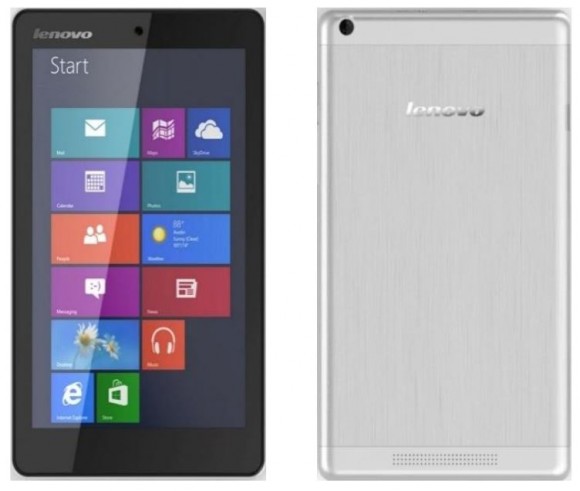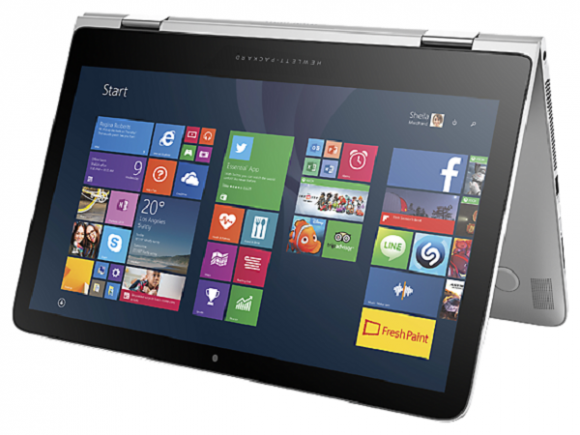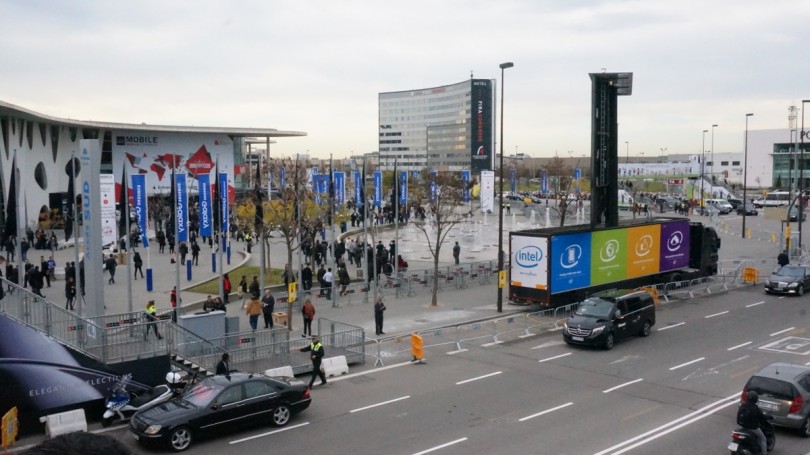aNewDomain — Against an ocean of smartphones, a number of announcements at MWC 2015 stood out as important to technology end users everywhere, including a small sea of Android and Windows tablets and an incoming river of new chipsets from Intel and Qualcomm for next generation devices.
Android Tablets
Held each year in Barcelona, Mobile World Congress is primarily a trade show for wireless carriers and corporate IT buyers. But beyond the networking hardware, enterprise middleware and staggering number of smartphones unveiled at MWC 2015, vendors also debuted tablets that consumers will be able to purchase.
Huawei’s Media Pad X2 was rolled out at this year’s show, and is reportedly faster than the Media Pad X1, thanks to a an ultra octa-core Kirin930 chipset running at 2.0 GHz. A 7-inch LPTS display with 1920 x 1200 resolution takes up four-fifths of the tablet’s front. The device will be offered in two flavors, one with 2GB of RAM and 18GB of built-in storage, the other with 3GB of RAM and 32GB of built-in storage. Each is a dual-SIM slate integrating LTE Cat. 6. Also aboard are a 13 MP rear camera and a 5 MP front facing camera.

Image Courtesy of Sony
Sony showed the beginnings of the very thin (9.33 mm) Xperia Z4 tablet, which packs in a 10-inch QHD display and a 6000 mAh battery for up to 17 hours of battery life. The Xperia Z4 is IP 68-certified as a waterproof slate, too, and Sony has added nylon corners to the familiar Xperia tablet design for protection against falls. Other specs include a 64-bit octa-core Snapdragon 810 processor, 32GB of internal storage, a 20.7 MP main camera and 5 MP front camera and LTE support.
For its part, TCL Communication Technology introduced the lower-end (comparatively) Alcatel One Touch PIXI 3 tablet in three editions. The OneTouch PIXI 3 (7) Wi-FI and OneTouch Pixi 3 (7) 3G each run Android 4.4 KitKat. Features include a 7-inch 1024 x 600 resolution TFT display, 512 MB of RAM, 4GB of built-in storage, a 2 MP rear camera and 0.3 MP front-facing camera. The Wi-Fi edition is based on a quad-core MediaTek MT8127 processor clocked at 1.3 GHz, while the 3G version includes a MediaTek MT8312 processor clocked at the same speed.
Specs for the OneTouch PIXI 3 (7) 4G LTE tablet are the same as for the other two except that it runs Android 5.0 Lollipop and is outfitted with a quad-core Snapdragon processor clocked at 1.1 GHz and 1 GB of RAM. (By the way, TCL – one of the first two manufacturers to sign on for Firefox OS-based smartphones— also launched two Lollipop-based smartphones at MWC 2015, along with the Firefox OS-enabled Alcatel Orange Klif handset, a rebranding of a PIXI 3 smartphone for Orange France.)
Despite its exit from the smartphone business, Nokia still makes tablets. At MCW 2015, Nokia showed off the pre-announced, iPad-like N1. The 7.9-inch tablet comes with Nokia’s Z Launcher UI, but this can be turned off to access base Android Lollipop. The N1 is built on an Intel Atom Z3580 chipset with a quad-core processor running at 2.3 GHz. The device includes 2 GB of RAM, 32 GB of storage, an 8 MP rear-facing camera and 5 MP front-facing camera. Supposedly, it will sell for about $249 USD, but it’s only available in China so far. Plans call for release in some parts of Europe, but not the U.S.
Windows Tablets
Almost a year ago, Microsoft started to make Windows available to manufacturers free of charge — with no licensing fees — for use in phones as well as in tablets with display sizes of 9 inches or less.
You can see early results of this move at MWC 2015 with Microsoft’s announcement of deals for Windows phones with Acer, K Touch, Coship, British-based KAZAM, XOLO of India and Philippines-based Cherry Mobile. Of course, Microsoft also debuted its own midrange Lumia 640 and 640 XL phones at MWC 2015.
Yet many large hardware makers are now shying away from Windows phones due to Microsoft’s purchase of Nokia’s handset business, noted Rob Enderle, principal analyst at the Enderle Group, in an interview with aNewDomain. He said,
“But device makers will be chafing at the bit to show what they can do in a Windows tablet in the $150 price bracket, either for Windows 10 or for Windows 8.1 now, with an upgrade to Windows 10 later.”

Image Courtesy of Lenovo
Sure enough, Lenovo used MWC 2015 as the launch pad for the Windows 8.1-enabled IdeaPad MIIX 300 tablet. Lenovo hasn’t announced any intentions to bring the new model to the U.S., but it will be priced at $149 USD. Built on an Intel Atom processor, the budget tablet provides an 8-inch, 1280 x 800 IPS display (300 nits), up to 2 GB of RAM, up to 64 GB of internal storage and 7 hours of battery life. Weighing in at 0.79 pounds, the IdeaPad MIIX 300 measures 5.1 inches by 8.5 inches and is just 0.4 inches thick. It will come in an aluminum chassis.
Meanwhile, at the higher end, Hewlett-Packard displayed the Spectre x360 and Spectre Pro X360, a pair of 13.2-inch convertible PCs. Priced at $1,149.99 and weighing in at 3.26 pounds, the Spectre x360 features a 256 GB mSATA SSD, Intel® Core™ i7-5500U processor, 3 GB of RAM, an HP TrueVision Full HD WVA Webcam (front-facing) with integrated dual digital microphones, numerous expansion and connectivity slots and a 3-cell, 56 Whr Lithium-ion battery providing up to 12 hours of battery life.

Image Courtesy of Hewlett-Packard
Intel & Qualcomm Chipsets
Well, Android 5.0 (Lollipop) is here. Maybe other tablets are awaiting Windows 10 and/or new silicon? Intel claims to have device manufacturers all lined up for three new Atom processors announced at MCW 2015.
The new x3 series, codenamed “SoFIA,” is targeted at smartphones and entry-level tablets. With its dual-core processor and 3G modem, the x3-3130 will probably be used for low-end devices. The x3-3230RK will be made by Rockchip — it incorporates a quad-core processor and 3G modem. The x3-C3440 offers a quad-core processor and LTE.
Each member of the trio features a 1.4GHz processor, 5 MP front camera, and 13 MP rear camera. About 20 companies, including Asus, will be using chips in the x3 family, according to Intel.
Intel’s new x5 and x7 chips, once codenamed “Cherry Trail,” are designed for tablets and 2-in-1 laptops. The x5 and x7 are the first Atom chips to use the 14nm manufacturing process. The chips include Intel Generation 8 graphics and Intel’s RealSense 3D camera technology. Intel says that big manufacturers like Lenovo, HP, Dell and Acer will be using the x5 and x7 chips.
For its part, Qualcomm announced the new Zeroth Platform, which will be driven by the Snapdragon 820 SoC. With the 820, Snapdragon will move to a new FinFET process and Qualcomm will introduce Kryo, its custom ARMv8 CPU core.
The Qualcomm chip is supposed to start sampling in the second half of 2015, so it should begin to show up in devices either late this year or early next year.
For aNewDomain, I’m Jacqueline Emigh.
Featured Image Credit: Ant Pruitt













